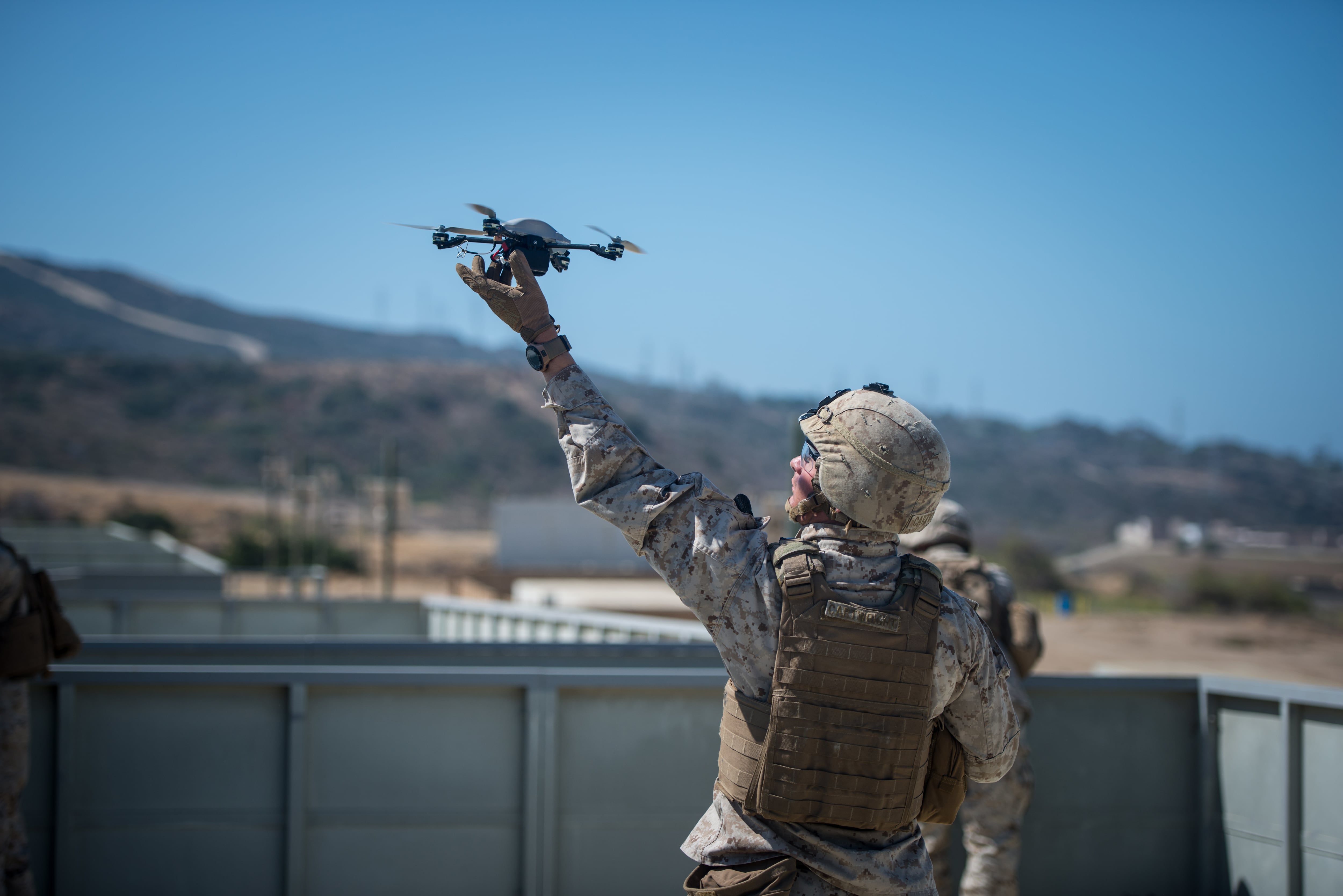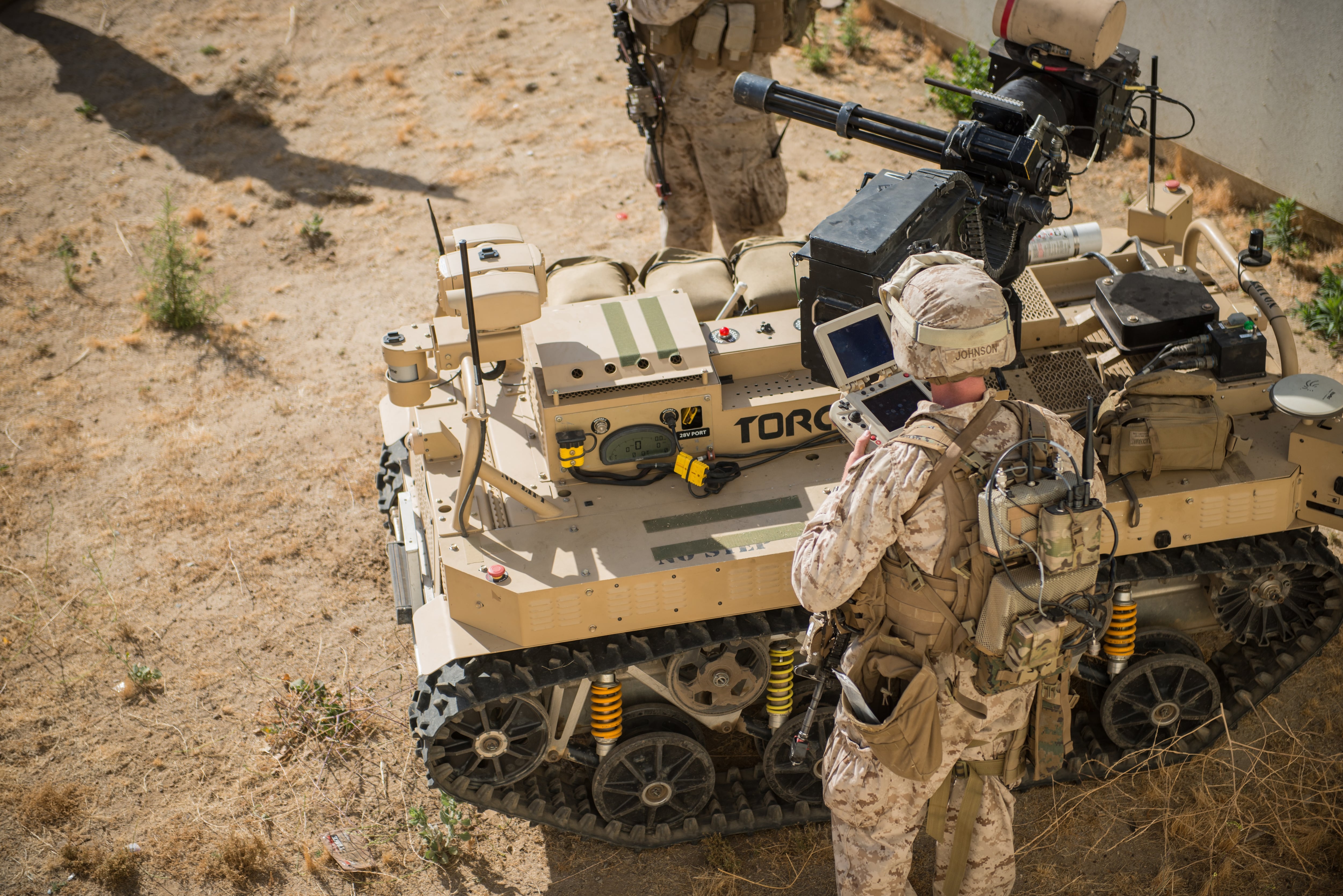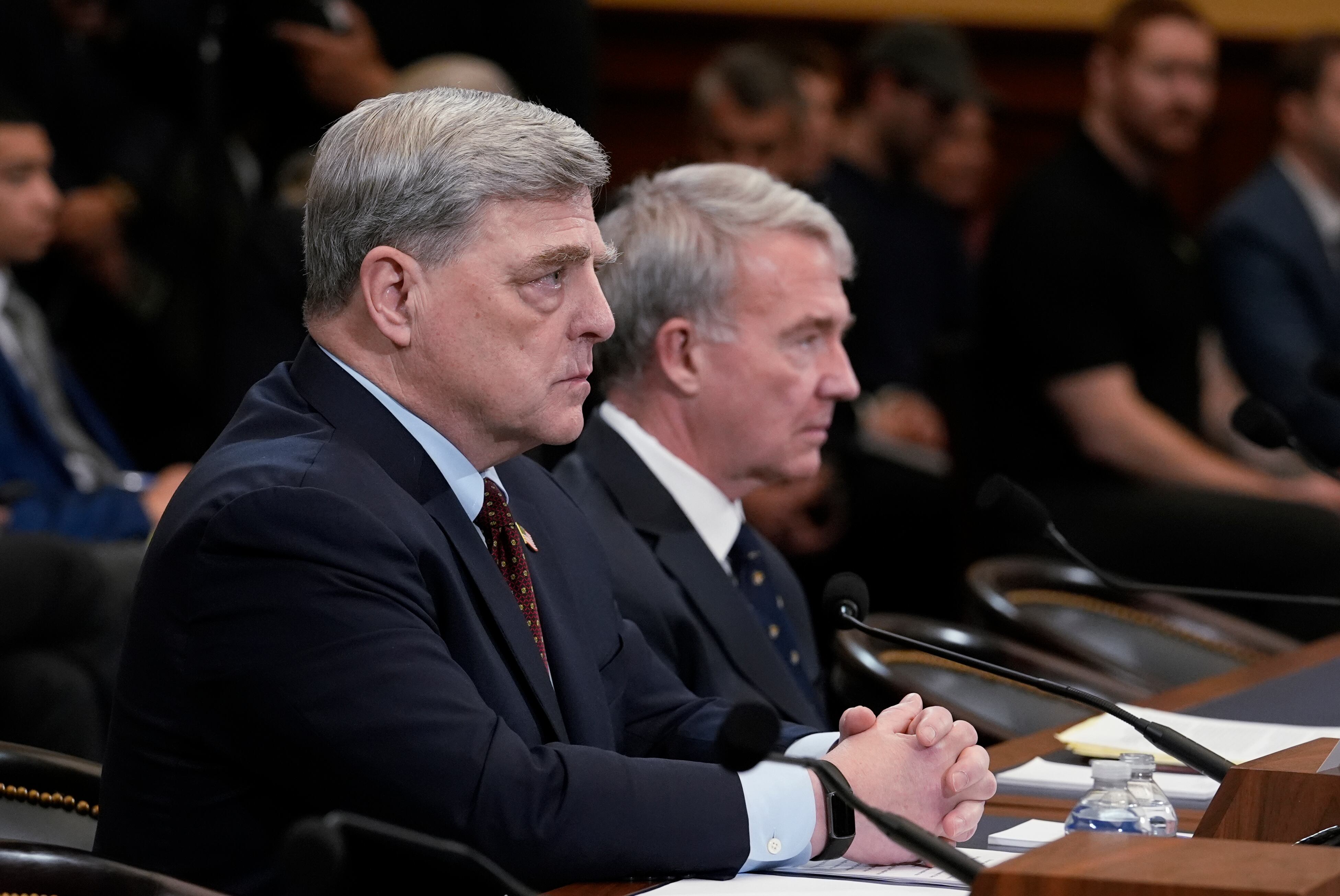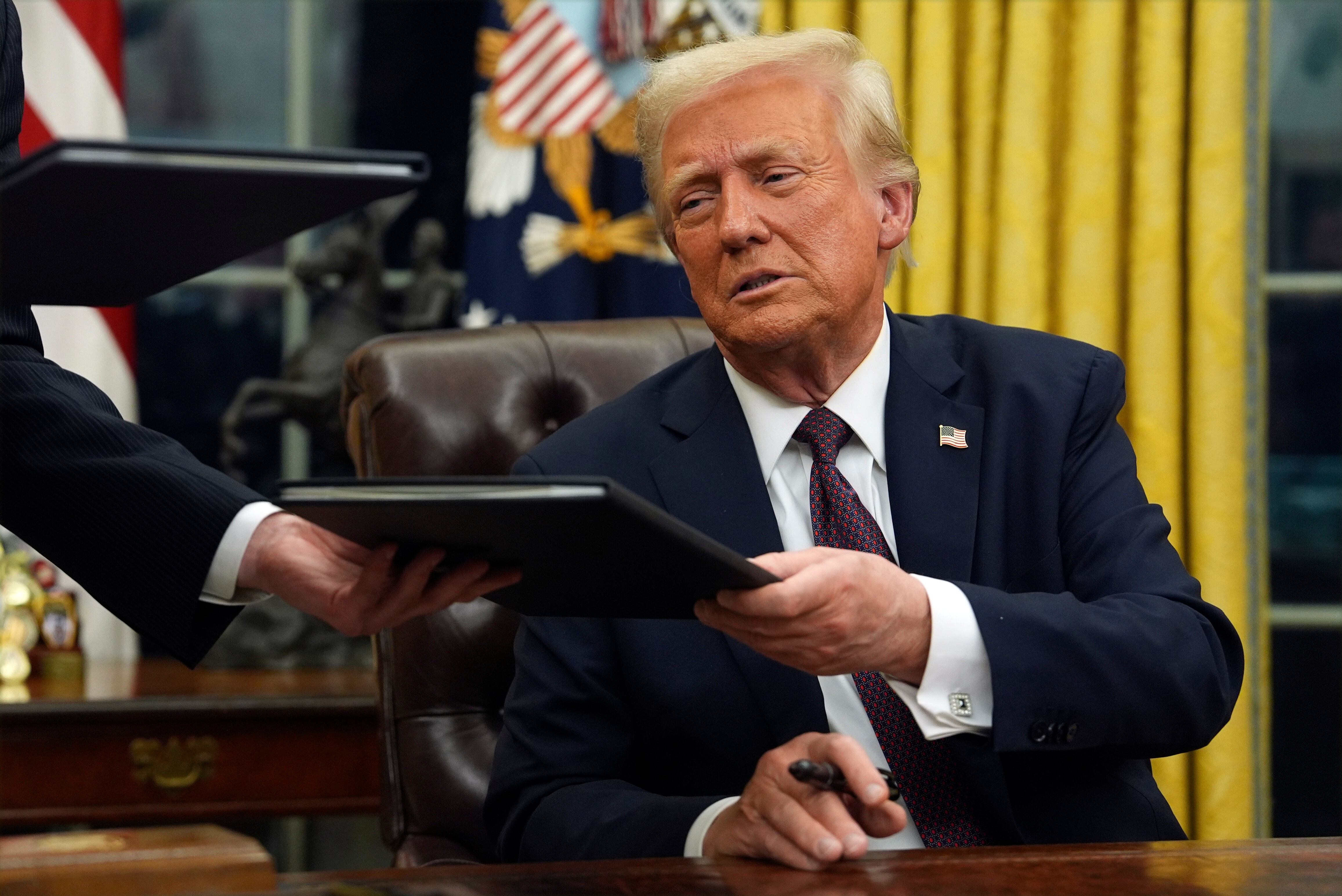Marines are being asked to test out tons of cool new gear and share ideas on ways the Corps can fill gaps — and a rapid equipping force is being stood up to field the new gear right right away.
That's the word from key Marine leaders as the service prepares for the future fight.
A new plan called Marine Corps Force 2025 provides a 10-year roadmap for how the Marine air-ground task force will keep the advantage on the battlefield. Marines will conduct rigorous experiments and war-gaming tests in order to help develop the plan.
The effort is driven by Commandant Gen. Robert Neller, who has made no secret of his assertion that the Corps is not postured to take on evolving threats. The enemy continues to innovate and develop new capabilities, and Marines need to keep the edge on the battlefield, Neller wrote in a service-wide August message. Marines need to reset equipment and modernize the force "despite this challenging fiscal environment," he wrote.

Lance Cpl. Cesar Salinas, an infantry Marine with 3rd Battalion, 5th Marines, tests out a miniature drone at Camp Pendleton, Calif. Marine leaders are looking for ways to field new gear faster.
Photo Credit: Lance Cpl. Julien Rodarte/Marine Corps
Lt. Gen. Robert Walsh, deputy commandant for Combat Development and Integration, is leading that charge. The effort kicked off with more than 200 warfighters from across the operational force carefully considering what Marines need to combat a more tech-savvy enemy. They came up with dozens of solutions that were sent off to one-star operational planning teams for approval.
Neller has also been pushing a culture of innovation in the Marine Corps. The commandant described Sea Dragon 2025 as "a quest for solutions to the problems of tomorrow." Col.
John Armellino calls it a "
dramatic approach to transform the force in the coming decade."
Armellino, the operations officer for Marine Corps Warfighting Lab/Futures Directorate, said
Sea Dragon will help Marines get used to using new technology on the battlefield. The Marine Corps will review feedback from those testing the gear in order to inform leaders' decision about what will be fielded, he said.
The new doctrine identifies several areas in which the Marine Corps needs to improve, he added. Fixes include:
– Speeding up the development of the various components of command and control so that it can better manage the many aspects of modern and future maneuver warfare, and survive the wide variety of attacks that will result from emerging technologies.
– Finding new ways to manage the use of information and communications to give friendly forces greater situational awareness and response times, while slowing the same for enemy forces.
– Improving the ability to quickly clear obstructions when fighting in complex terrain and urban areas.
– Making ground fires more accurate and deadly.
Since tens of thousands of Marines are still forward deployed, standing ready to respond to worldwide crises, one infantry battalion has been tapped to lead the charge in experimenting with new concepts. Members of 3rd Battalion, 5th Marines recently wrapped up a weeks-long experiment in Twentynine Palms, California. The unit brought all kinds of cool gadgets to the game: power-generating exoskeletons, small-unit water purifiers, self-driving vehicles and miniature tanks, bird-sized drones and robots galore.
Next they'll put some of that gear to the test while serving as the ground combat element for the 31st Marine Expeditionary Unit in Okinawa, Japan. They're also on tap to participate in Talisman Saber, a weeks-long training exercise held in Australia every other year.
Ground-up innovation
Walsh, often seen as the Marine Corps' chief innovator, has stressed that that no one unit or group has a monopoly on innovation. Several commands have launched efforts in recent months to encourage individual Marines to share their ideas about what the Corps can do better.
The effort kicked off with a February innovation symposium hosted by the Warfighting Lab. In June, the Marine Corps launched its first-ever logistics innovation challenge with the goal of improving capabilities and processes. Marines can compete in two areas: the "Maker Challenge," which calls on leathernecks to build something to boost readiness like new radios or rifle scopes, or the "Wearables Challenge," which asks participants to find ways to use existing technologies like smart watches or virtual reality glasses to give the Corps a new edge on the battlefield.
Another challenge set to launch this fall will use a crowd-sourcing idea portal to solicit ideas how Marines can use robotic, autonomous and unmanned systems across all warfighting functions — a top priority in Marine Corps Force 2025.
"For an organization to remain relevant it must continually adapt through innovation," he said. "That innovation enables transformation. The Marine Corps is continually seeking out methods and ideas to remain relevant."
Because ideas and experiments often take years to produce a solution — and one that is often outdated by the time it arrives — the Warfighting Lab is looking to develop a "solution accelerator cell" that will rapidly prototype and field solutions. That’s not to say everything will be in the supply line in short order. Some ideas need further analysis and experimentation, and thus need to be incubated, the colonel said. But some are turn-key and their acquisition can be accelerated. How fast would he like to get such items into the hands of Marines?
"The ideal would be immediately,"
Armellino said.
"And some can be."
An operational planning team is looking into this and, with the commandant’s backing, it should be able to overcome much of the red tape that can tie up the purchase of critical items. In fact,
Armellino said the greatest variable was not cost or competition,
but the necessity to make sure each item not only meets the need, but can withstand the rigors of expeditionary operations.
"We need to make sure that whatever equipment we rapidly field is Marine relevant and Marine-proof," he said.
Lance M. Bacon is senior reporter for Marine Corps Times. He covers Marine Corps Combat Development Command, Marine Corps Forces Command, personnel / career issues, Marine Corps Logistics Command, II MEF, and Marine Forces North. He can be reached at
.





